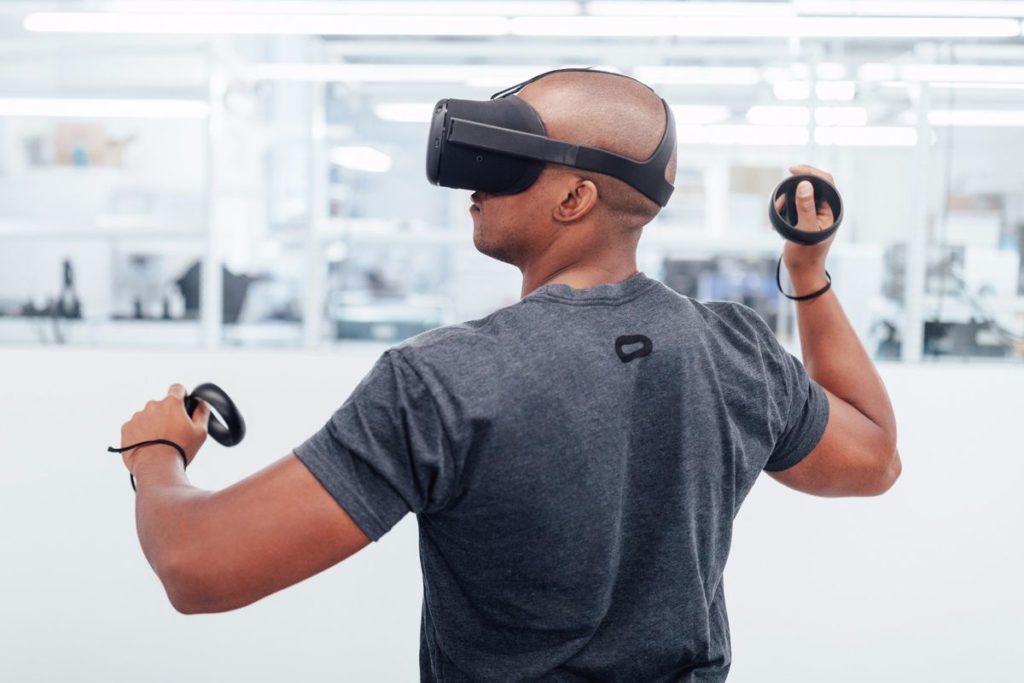- Facebook announced the release of their Oculus Go standalone VR headset at the F8 developer conference on May 1st, and gave every attendee at the conference a free device.
- The Go is an easy access point for getting into VR with its $199 price tag and built-in software eliminating the need for wires or other devices to power the device.
- Though not a breakthrough, it is a step toward the mass adoption of VR. Still, we believe the much more important test comes with Oculus’s Santa Cruz project.
A proof-of-concept product. Facebook’s F8 giveaway reinforces the objective of the Oculus Go: to make VR more accessible and get the technology in the hands of more users. Unlike the Gear VR or Google Daydream, the headset doesn’t require a compatible smartphone to work, opening the door for other Android and iPhone users to get into VR at an accessible price point. The reason it must be “other Android and iPhone users” and not “anyone and everyone” is that a smartphone app is required to get the Go up and running. Fortunately, once the registration is done the app is unnecessary. The visuals and overall experience are pretty much the same as the Go’s smartphone-based cousins, but, while this means no new fancy bells and whistles, it also means that the quality of the experience is preserved in the leap from mobile to standalone VR. The controller, being one-handed with limited functionality, hinders the Go’s gaming capabilities, making video and other interactive experiences the most compelling apps available. As time goes on we believe developers will begin to get the hang of creating for this new platform and the experiences will improve. Nonetheless, the novelty of standalone VR is well-demonstrated with the Go – pull the headset over your eyes, and you’re in VR. No need to fumble with your smartphone or the outright daunting hardware of PC-based VR that makes the technology inaccessible. The Oculus Go is a great entry-point into virtual reality, and will hopefully expose many more people to the technology. Despite this fact, the Oculus Go comes up short in producing true ‘wow’ moments that can sway VR skeptics’ minds.

A promotional image for the Oculus Santa Cruz.
Santa Cruz in sight. Successfully replicating the Gear VR/Daydream experience on a standalone device bodes well for Oculus’s more ambitious standalone VR project, the Santa Cruz. Announced in 2016, the Santa Cruz is the standalone version of Oculus’s high-end Rift VR system, just as the Go is the standalone version of Gear VR (and Daydream). The Santa Cruz headset will have six-degrees-of-freedom through inside-out tracking and two full controllers for a much more robust experience. It is a logical progression to make the less intensive smartphone-quality VR content work on a standalone device before trying to replicate what high-end PCs are capable of. Providing a PC-quality (or better) VR experience anywhere will be far more effective than the Oculus Go in convincing people that VR is for real and here to stay. While this first generation of standalone headsets isn’t exactly a watershed moment, it is a positive and important step in VR innovation.
Disclaimer: We actively write about the themes in which we invest: virtual reality, augmented reality, artificial intelligence, and robotics. From time to time, we will write about companies that are in our portfolio. Content on this site including opinions on specific themes in technology, market estimates, and estimates and commentary regarding publicly traded or private companies is not intended for use in making investment decisions. We hold no obligation to update any of our projections. We express no warranties about any estimates or opinions we make.